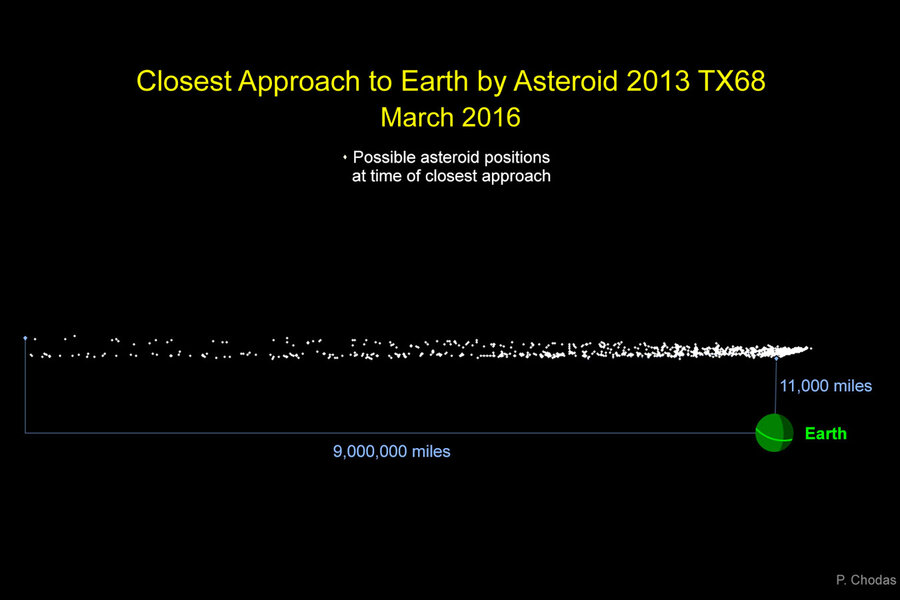Asteroid promises to dazzle Earthlings with close pass, but not too close
Loading...
Earthlings may get a rare glimpse of an asteroid streaking across the sky next month.
The 100-foot-wide asteroid is expected to pass close enough to Earth for people to observe see it, but not anywhere near close enough to pose an threat, NASA said on Friday.
Two years ago, when the asteroid was first spotted, it flew past Earth at a healthy distance of approximately 1.3 million miles. On March 5, when it is expected to travel by again, the asteroid will be much closer: scientists at NASA estimate it could fly as close as 11,000 miles from Earth, or 1/20th of the average distance between the Earth and the moon.
NASA says that the asteroid’s next flyby has no chance of impacting Earth on its next rotation through space. But in 2017, when it zooms by again, there will be an infinitely small chance for impact, or about 1-in-250 million. The space rock has an even lower chance of hitting Earth when it is observed in 2046 and 2097.
"The possibilities of collision on any of the three future flyby dates are far too small to be of any real concern. I fully expect any future observations to reduce the probability even more," Paul Chodas, manager of NASA’s Center for Near-Earth Object Studies (CNEOS), said in a NASA blog post.
NASA monitors the trajectory of all asteroids just in case there is a possibility of any causing any damage on hear. In January the space agency opened a Planetary Defense Coordination Office tasked specifically with identifying Near Earth Objects (NEOs) that could be potentially hazardous to planet Earth. In the long term, the office plans to develop technologies that would both detect such objects and, if necessary, redirect them away from Earth.
NASA’s WISE telescope, which first launched in 2009, has been tasked with finding and identifying NEOs. The WISE telescope is uniquely suited to the task because it surveys the entire sky, enabling it to find asteroids that may be coming toward Earth from any direction.








